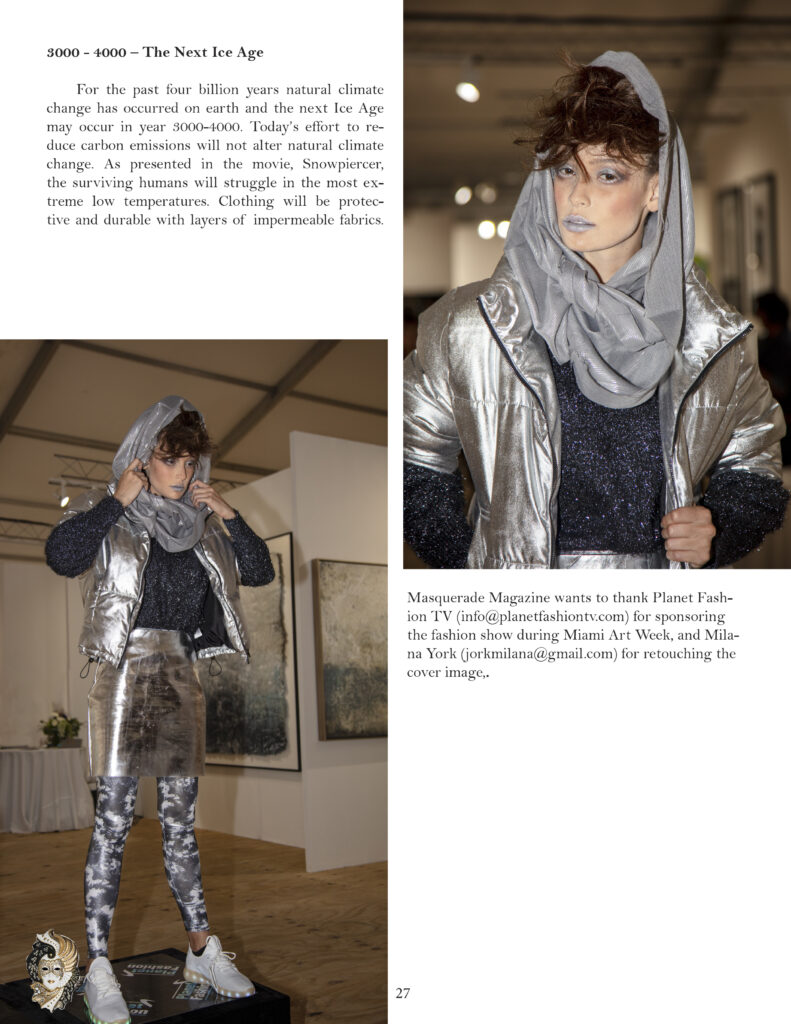Designers’ collections reflect societal evolution
Story and Photography by Terry Check
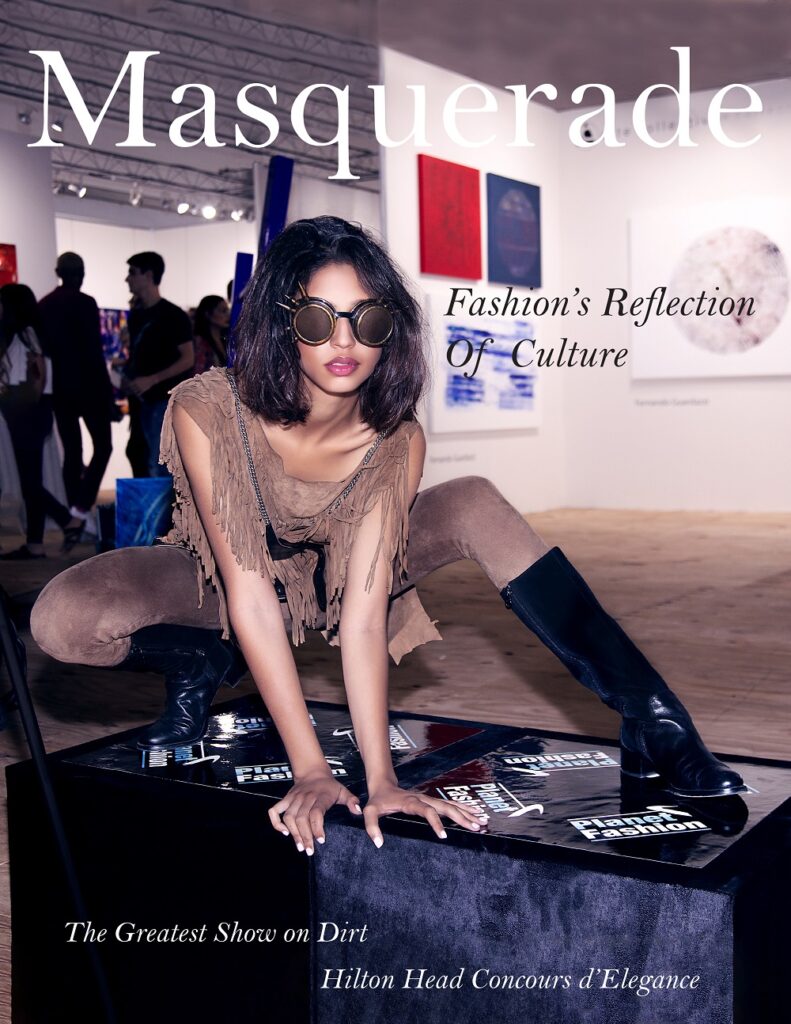
1920s – Roaring Twenties
As the world continued to whirl from World War I, society, culture, and fashion was fundamentally changed forever. Elegance and prosperity typified the Roaring Twenties. Gone were the formal, multiple layers for women fashions, evolving into progressive simplification of the evening dress, silky hemlines reaching the floor, decorated with sequins, beadwork, and embroidery. Elegant skull caps with a Great Gatsby flair insert with rhinestones matched the beading on the dress. Black and white Flapper spats finished the 1920s look.
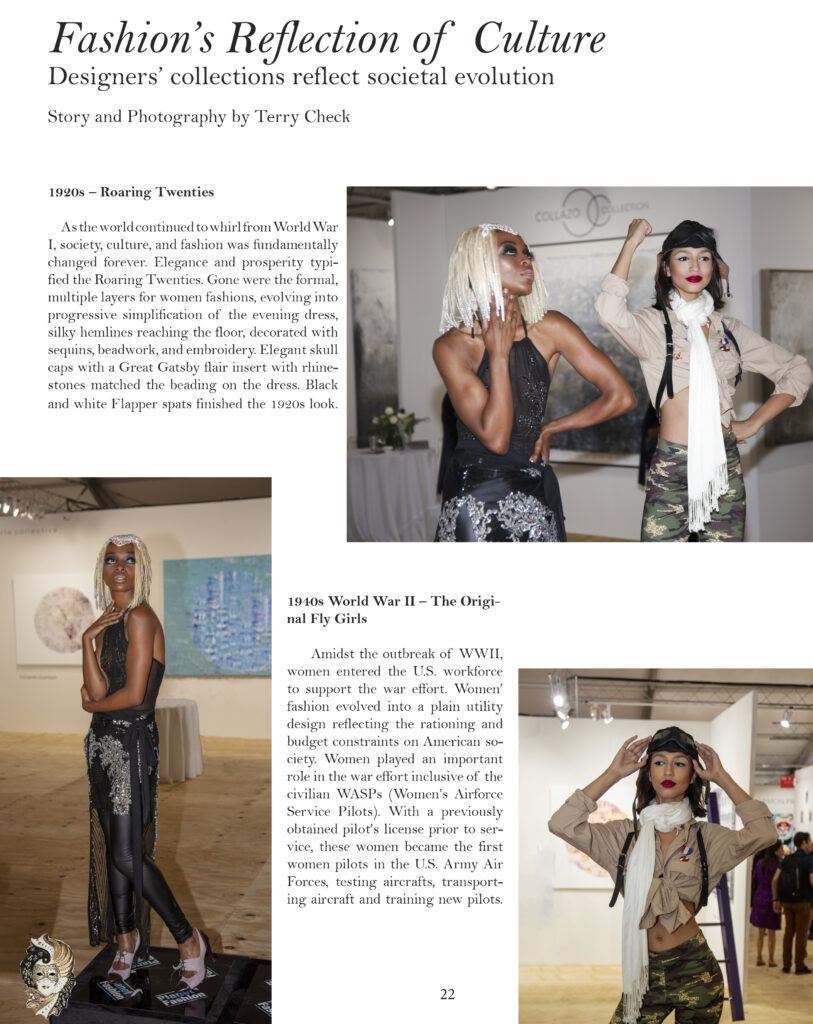
1940s World War II – The Original Fly Girls
Amidst the outbreak of WWII, women entered the U.S. workforce to support the war effort. Women’ fashion evolved into a plain utility design reflecting the rationing and budget constraints on American society. Women played an important role in the war effort inclusive of the civilian WASPs (Women’s Airforce Service Pilots). With a previously obtained pilot’s license prior to service, these women became the first women pilots in the U.S. Army Air Forces, testing aircrafts, transporting aircraft and training new pilots.
1950s – Playtime Fashion
After WWII with the reconstruction of Europe, and women returning to home, fashion moved away from the utility look to a more relaxed and casual appearance emphasizing the feminine hourglass figure with cinched waists, poodle skirts and pencil skirts. The fashion look became more playful with colors and patterns. Makeup became more expressive as women began using bright lipstick and eyeliner.
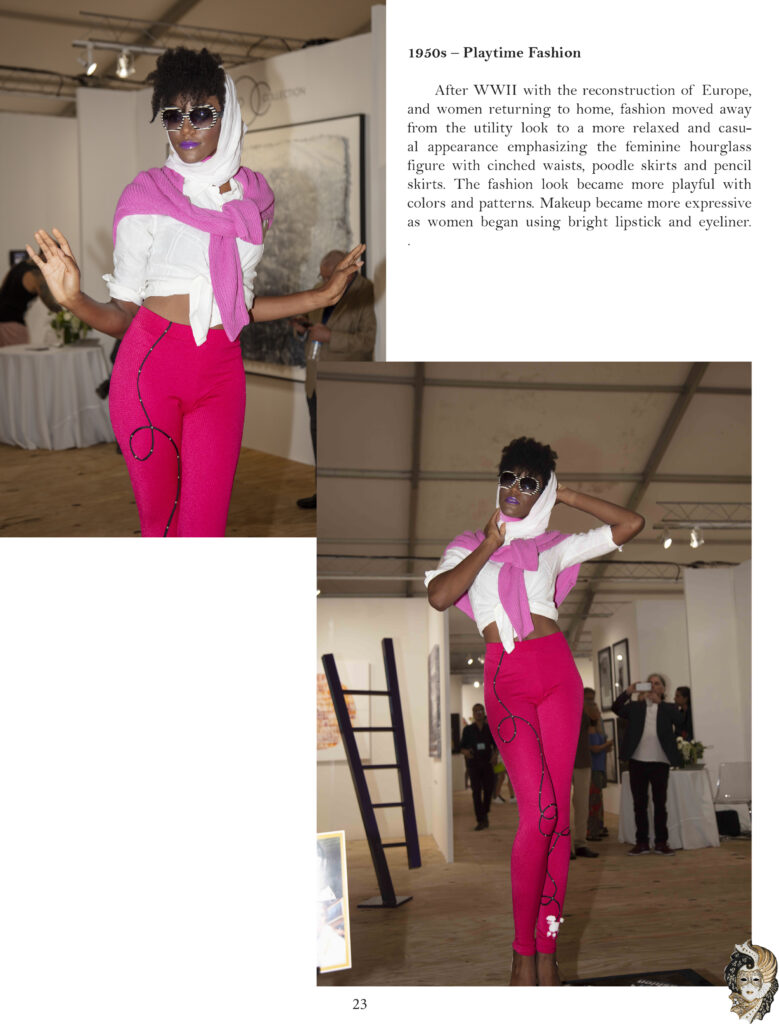
1970s – Polyester Decade
Polyester became the material of choice with bright colors and prints displayed everywhere from hippie fashion to disco party wear. Men and women alike were wearing tight-fitting clothing with high-rise pants extending above the natural waist.
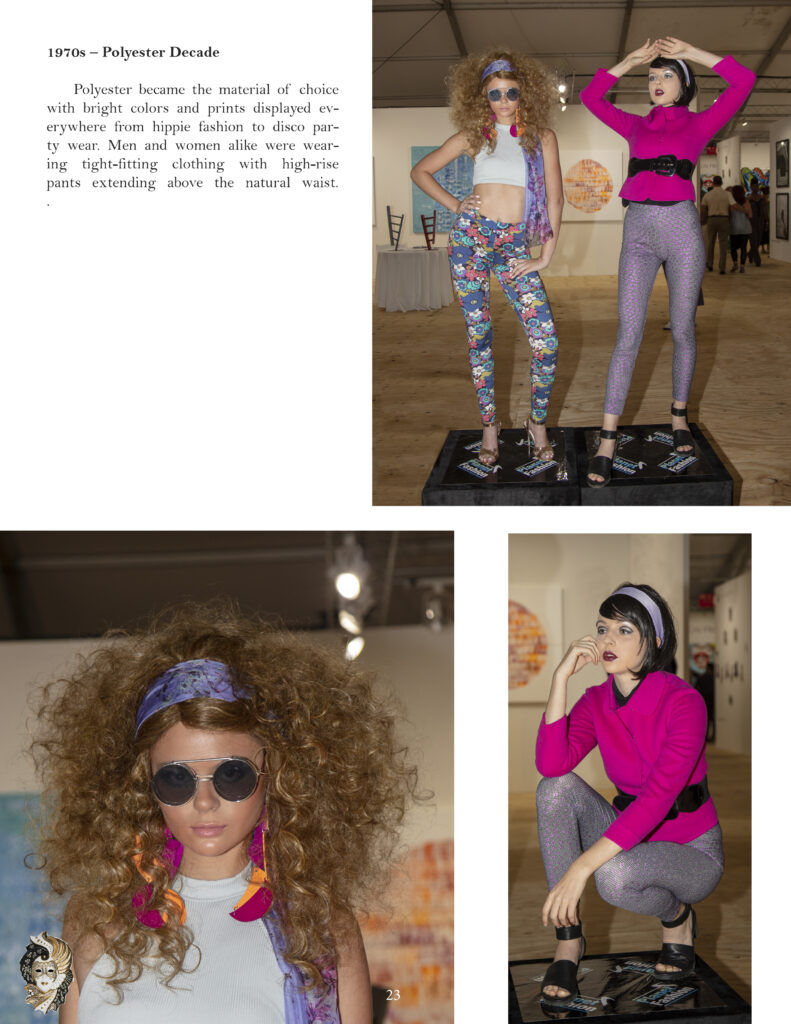
1980s – Big and Bright
Materialistic values and flaunting of wealth created the atmosphere in the fashion world of big hair styles, funky earnings, bold and print leggings, and draped disco tops. Fitness fashion came to the forefront sporting high-rise tights, floral tops and scrunchy leg warmers, also introducing color-coordinated headbands.
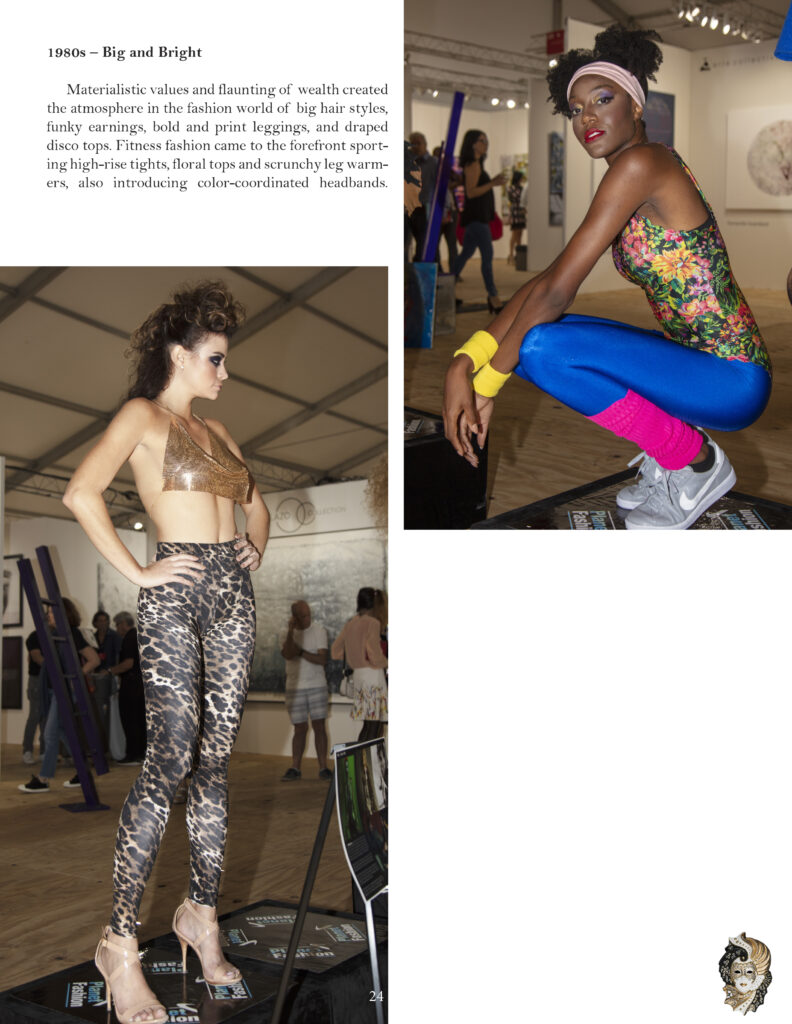
2000 – Gypset Style
Emerging as a popular subculture, Gypset Style, became a mélange of gypsy free-spirit and jet set glamour. Travel as a dream gazer to far-off lands in search of an unconventional lifestyle of fashionable exoticism and nomadic freedom. Fashion had progressed to an agglomeration bohemian and ethic prints, layered garments with multiple bangles and pendants. As described by Julia Chaplin, “Gypsets are creative and optimistic people who blend fashion and art, whilst maintaining a relaxed, laidback approach to life.”
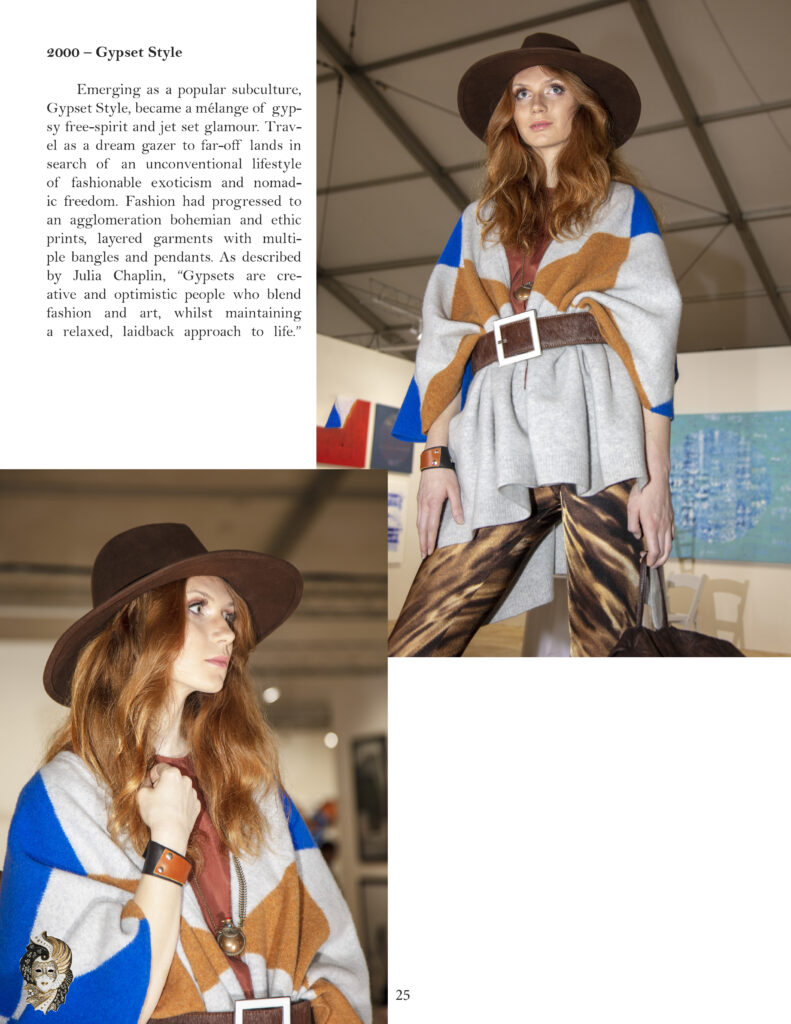
2030 – Desert Nomad and Road Warrior
The decadent society falls below a former “level of unity, vigor, and efficiency. With worldwide deterioration of governance and civil disobedience, the crumbling society will lead to subordinate groups following a nuclear holocaust. The world will become a dessert wasteland. In this survival scenario, there will be no fashion as we know …. Clothing will be a tool of survival for the desert nomad and road warrior.
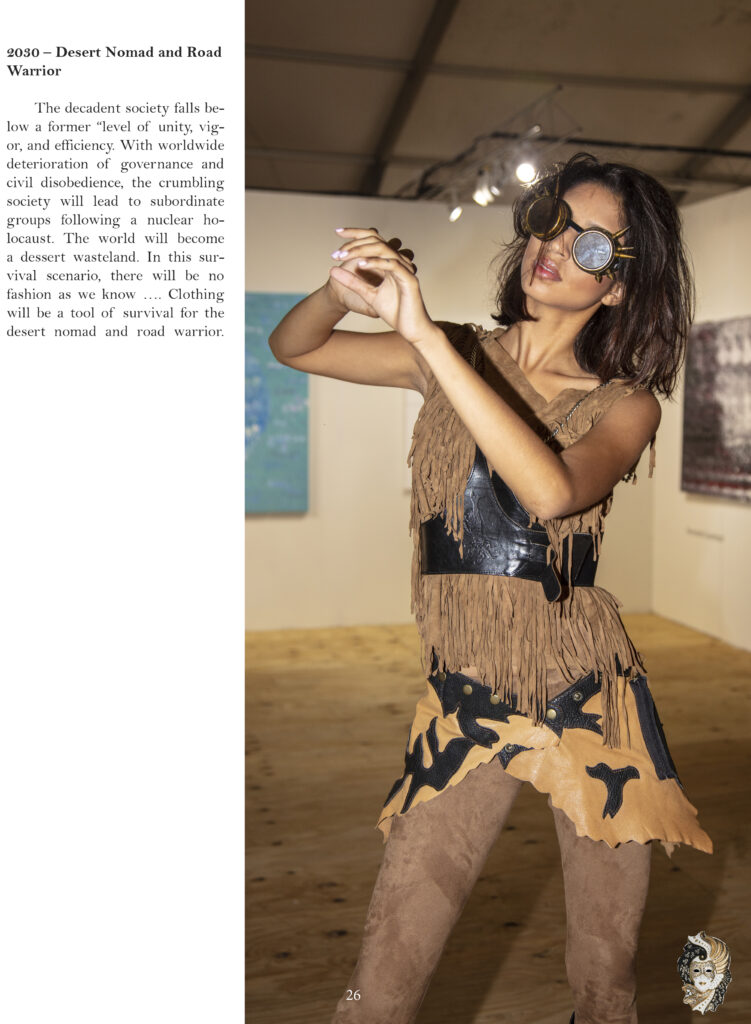
3000 – 4000 – The Next Ice Age
For the past four billion years natural climate change has occurred on earth and the next Ice Age may occur in year 3000-4000. Today’s effort to reduce carbon emissions will not alter natural climate change. As presented in the movie, Snowpiercer, the surviving humans will struggle in the most extreme low temperatures. Clothing will be protective and durable with layers of impermeable fabrics.
